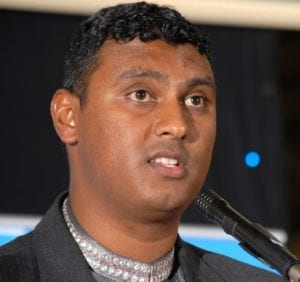Ideally, engineering teams should reflect the accepted international municipal and utility ratio of six engineering professionals per 100 000 inhabitants. However, in South Africa’s best case scenario – larger cities and towns – municipalities had access to three engineering professionals for each 100 000 inhabitants.
“This is not nearly enough to address our country’s service delivery needs, including water, sanitation and waste management. If allowed to continue, service delivery will all but come to a standstill,” said South African Institution of Civil Engineering (SAICE) CEO Manglin Pillay on Tuesday. SAICE highlighted the dilemma the Department of Water Affairs (DWA) faced in terms of its civil engineering skills base. SAICE fellow Dr Chris Herold said that in May this year, the DWA had only 31% of its complement of civil engineers – or 78 out of 250 funded posts. Also, 25% of these were aged between 60 and 64, which meant they would be retiring within the next five years – a loss which represented 44% of the chief engineers at the DWA. Another worrying factor was that 24% of the top managers fell in the 55 to 59 age group. Herold believed the long-term health of the DWA was seriously compromised, as there were only ten candidate engineers at the bottom end of the scale. Between these candidate engineers and the top end there were only 20 engineers in production grade, representing an “enormous, gaping middle management gap” that would not be easy to fill. Training engineers at South Africa’s tertiary institutions also presented a problem. According to SAICE data, at some institutions, of the around 1 300 applications received, only about 400 applicants had the minimum requirement in maths and science, and only 20% of these could be accepted as first-year students, having appropriate symbols in these subjects. 2012 SAICE president and first president of the Federation of African Engineering Organisations Dr Martin van Veelen emphasised that South Africa’s accumulated wisdom was vested in an ageing engineering corps, and that the challenge was to transfer this wisdom to young engineers.He said SAICE was in the process of taking action to address this problem, partially through its ‘Era of Civilution’ programme.
As part of this programme, SAICE would host the Civilution Congress from April 6 to 8 next year, where engineers would seek ways to best approach the engineering and infrastructure challenges facing South Africa. “It is time for engineers and engineering to redeem their esteem, prestige and respect; to take back what rightly belongs to us ?excellence, ethical business practice, sustainability, and making a difference,” added Pillay. SAICE on Tuesday also publicly stated its support for cement manufacturer PPC’s earlier plea for an Infrastructure Codesa to guide infrastructure development in South Africa. The term Codesa is synonymous with negotiated settlements in South Africa, following successful political negotiation to end apartheid 20 years ago through the Convention for a Democratic South Africa, or Codesa. “The provision of civil infrastructure is the surest way to improve the social and economic wealth of a nation,” said Pillay. PPC’s suggested Codesa could, possibly, be part and parcel of the Civilution Congress, he noted. Pillay said SAICE was inviting all tiers of government and other stakeholders to become part of what he termed the “Civilution Congress solution-finding forum”. Water Affairs faces dire civil engineer shortage, says SAICE







